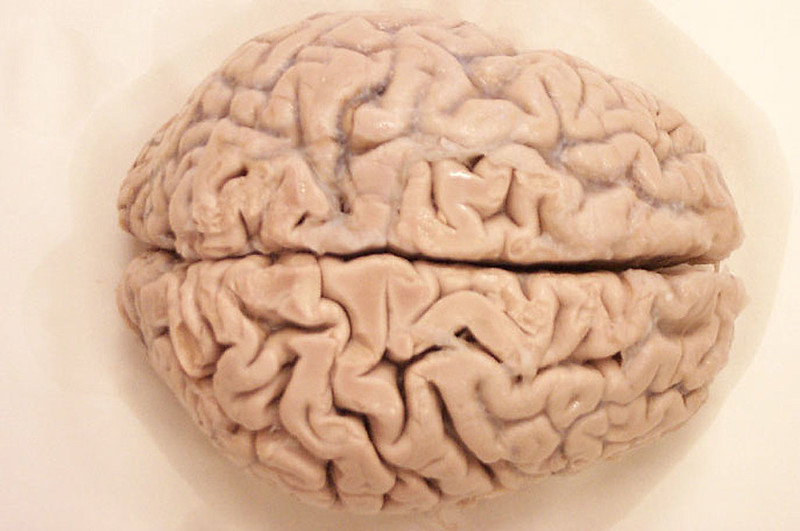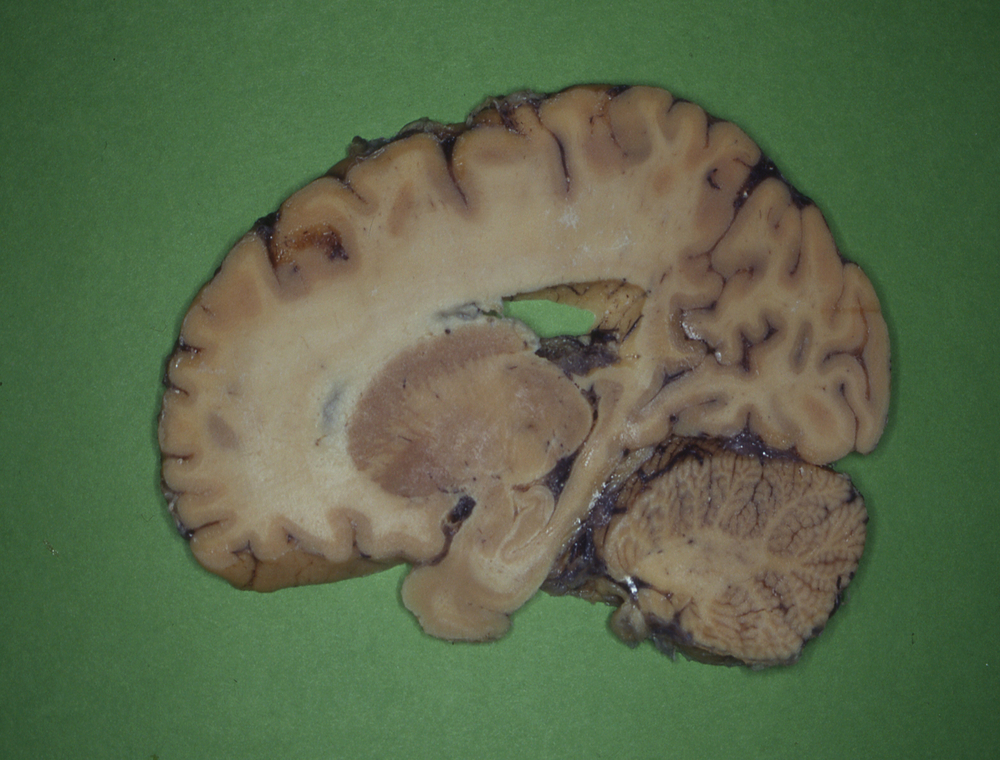If you ever have the chance to look at a human brain outside the protective dome of the skull, you’ll find it looks distinctly… gray. And wet. But mostly gray. This color is almost irrevocably linked with the brain, perhaps most famously by Agatha Christie’s protagonist Hercule Poirot, who talked of his “little gray cells” that helped him solve the most perplexing mysteries. But our fixation on the gray can sometimes lead us to ignore a second type of brain tissue, one that lies just beneath: the white matter.
Let’s take a closer look at these two types of brain tissue and discover the difference between gray matter and white matter.
A quick anatomy lesson
Here’s a fact that might ruin your day: your brain is floating. Cerebrospinal fluid (CSF) surrounds the brain, forming a protective shock absorber between the delicate organ and the hard bone of the skull. CSF performs other vital functions that keep the brain healthy, so you should be very grateful it’s there – just maybe try not to think about it too much.
The problem is, if you want to remove a brain for the purposes of scientific study, you’re taking it out of this lovely, moist, floaty environment, and a human brain sitting on its own on a table doesn’t have much in the way of structural integrity.
That’s why, for generations, anatomists and medical scientists have turned to chemical fixation methods to preserve and solidify the tissue, meaning it can be sliced and examined, or stored in jars for the purposes of haunting your nightmares.
The below image shows a formaldehyde-fixed human brain, viewed from above. Specifically, what we’re looking at here is the gray matter. The troughs winding across the surface are called sulci, and the corresponding ridges are called gyri.

Gray, wrinkly, and surprisingly small. No, we’re not describing your Great Aunt Mildred.
Now, if we slice the brain open, you can see a slightly darker line of demarcation running all around the outside edge. The lighter-colored tissue below that line is the white matter. There’s also a whacking great hole, but we’ll get to that later.

Definitely not a new type of luncheon meat.
Image credit: Dr. Norbert Lange/Shutterstock.com
That’s all well and good. But what’s the actual difference between these two tissues?
What is gray matter?
Gray matter mostly consists of the cell bodies of neurons. This is where you’ll find the nucleus of the cell as well as all the other organelles it needs to function, such as the mitochondria (all together now: the powerhouse of the cell).
While most of the gray matter forms the outermost layer of the organ, as we’ve seen, there are little pockets of it deep within the brain and brain stem, which are called nuclei. We know – two types of nuclei in the space of two paragraphs. Sorry about that.
The outer, gray-matter-heavy layer of the brain is called the cerebral cortex, and it controls many processes that we think of as “higher” brain functions, like complex thought and working memory. The cerebellum, a comparatively small structure just above the brain stem, is also rich in gray matter and is essential for motor control and coordination.
What is white matter?
These layers of neuronal cell bodies wouldn’t be much use if there was nothing connecting them – that’s where the white matter comes in.
White matter is made up of scores of axons. You can think of them like cables, and they’re covered with a layer of insulation called the myelin sheath that acts like the protective plastic coating on electrical wires. It’s the myelin itself that appears white, and gives the white matter its name.

Myelin insulation surrounding axons from rat spinal nerves.
Depending on their function and location throughout the nervous system, axons can stretch for very long distances – up to a meter (over 3 feet) in the case of the sciatic nerve – but are much finer than a human hair.
Nerve signals that begin in the cell body are transmitted along the axon as an action potential. The signal effectively “jumps” along between tiny gaps in the myelin sheath called the nodes of Ranvier, but it all happens on a super-fast timescale.
What about other cells and tissues?
The brain isn’t only made up of neurons. In fact, scientists are now recognizing that non-neuronal cells, known as glia, could have a more important role in brain health and function than was ever previously thought.
Many glial cells are found within the gray matter. They include microglia, the brain’s very own immune system, and star-shaped astrocytes, the maintainers of a good working environment inside the brain.
Apart from glia, gray matter also contains the brain’s blood vessels, and a few other cell types. White matter contains some glia too, most notably the oligodendrocytes that are responsible for producing the all-important myelin sheath.
If we venture beyond the white matter, right into the deep heart of the brain, we find the ventricles. These are four, fluid-filled spaces (remember the hole in the brain slice?) where the CSF is produced by another type of glial cell, the ependymal cells.
What happens when things go wrong?
For the brain to work properly, you need both the gray and white matter to be playing their own unique parts, but what can happen when things go wrong?
Neurodegenerative diseases, like Alzheimer’s and Parkinson’s disease, primarily affect gray matter, causing the gradual loss of neurons in particular brain areas.

This stark comparison shows the realities of tissue loss in severe Alzheimer’s disease.
Multiple sclerosis, on the other hand, is a demyelinating disease – the protective myelin sheath around the axons in white matter is degraded. Depending on the form of the disease, the degradation/repair cycle can happen multiple times over someone’s life, or the myelin can be permanently lost, leading to neuronal death.
The term “white matter disease” refers to a set of conditions in which the blood flow to the white matter is reduced, causing damage to the tissue. This can happen as a normal consequence of aging, but is also a sign of disease affecting the blood vessels, and increases the risk of complications like stroke.
So, there you have it: a whistle-stop tour through these two distinct, but equally important, brain tissues. Next time you set your “little gray cells” to solving a difficult problem, just remember – those gray cells wouldn’t get very far without the white matter that brings them together.
Source Link: Gray Matter Vs White Matter: What Is In A Brain?